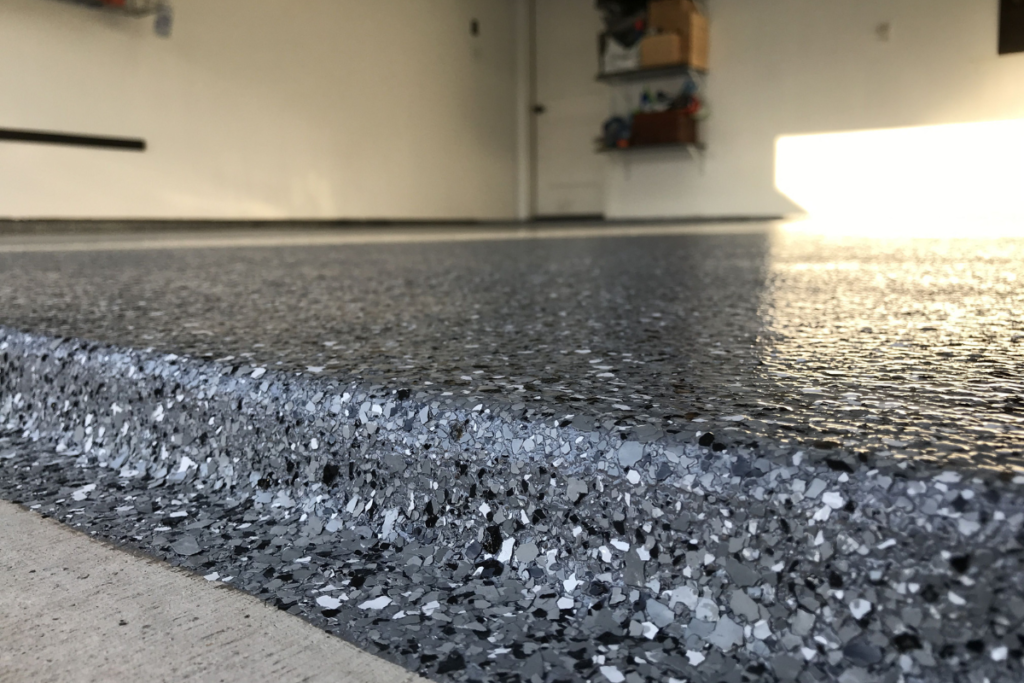Polyaspartic coatings are a breakthrough in flooring technology. They provide durability, flexibility, and most importantly, fast-drying properties that make them ideal for commercial and residential applications. These coatings offer protection and longevity while being resistant to chemicals, abrasions, and UV light. Here are 10 quick tips to help you maximize the benefits of polyaspartic coatings for your project.
1. Choose the Right Surface Preparation
Surface preparation is critical for ensuring proper adhesion of a polyaspartic coating. The first step involves thoroughly cleaning the surface, removing all dust, grease, and contaminants. If you’re applying the coating to concrete, consider grinding or shot blasting the surface to increase adhesion. A smooth surface won’t allow the polyaspartic material to properly bind, which could lead to peeling or bubbling later on. A well-prepared surface can significantly enhance the longevity and effectiveness of your polyaspartic coating.
2. Use a High-Quality Primer
Before applying the polyaspartic coating, it is essential to use a high-quality primer. The primer acts as a bonding layer between the surface and the coating, ensuring that the polyaspartic material adheres strongly and doesn’t lift or peel over time. Make sure the primer you choose is compatible with polyaspartic materials for best results.
3. Pay Attention to the Application Conditions
One of the best features of polyaspartic coatings is their flexibility in a wide range of conditions. However, you still need to ensure optimal conditions when applying the coating. Ideal temperatures range between 50°F and 90°F. Additionally, try to avoid high humidity levels, as they can affect the coating’s curing process. Applying polyaspartic coatings in less-than-ideal conditions could compromise the speed at which the coating dries and its overall durability.
4. Work in Thin Layers for Faster Drying
One of the advantages of polyaspartic coatings is their fast-drying nature, but to make sure you get the fastest dry time possible, apply the material in thin, even layers. A thick application might take longer to dry and could result in uneven curing. By layering the coating in thin coats, you promote even curing and reduce the risk of bubbling, ensuring a flawless finish.
5. Mix Only What You Can Apply
Polyaspartic coatings are fast-drying, meaning you’ll have a limited working window. Mix only the amount of coating you can apply within the recommended time frame, which is typically 15-20 minutes. If the material begins to harden in the mixing container, it will be challenging to spread evenly, potentially ruining the surface.
6. Invest in the Right Application Tools
Using the correct tools is essential for a smooth, efficient application of polyaspartic coatings. Rollers and brushes with high-quality synthetic fibers work best to distribute the coating evenly. Additionally, ensure that your rollers and brushes are suited for solvent-based coatings, as polyaspartic formulas can damage cheaper tools, affecting the finish.
7. Be Aware of Pot Life
One of the most crucial factors when applying a polyaspartic coating is understanding its pot life. Pot life refers to the time the mixed material remains usable before it starts to harden. Given the fast-drying nature of polyaspartic coatings, this can be as short as 20 minutes. Therefore, it’s essential to mix in small batches and apply quickly to avoid waste and ensure a smooth finish.
8. Use Color Options Wisely
Polyaspartic coatings come in a wide range of colors and finishes. For decorative purposes, it’s important to choose a color or finish that complements the space. Whether you are working on a commercial property, garage floor, or outdoor patio, polyaspartic coatings can be customized with flakes, pigments, and metallic additives. These not only add aesthetic appeal but can also provide extra grip on high-traffic surfaces.
9. Ensure Proper Ventilation During Application
Polyaspartic coatings release volatile organic compounds (VOCs), which can be harmful when inhaled. To avoid health risks and ensure safety, work in well-ventilated areas. If you’re applying the coating indoors, make sure windows are open and fans are running to promote airflow. This also aids in the quick drying process, helping you meet the coating’s fast-drying expectations.
10. Consider a Clear Topcoat for Extra Durability
For areas exposed to heavy traffic or extreme conditions, it’s a good idea to apply a clear polyaspartic topcoat. This extra layer of protection will enhance the floor’s durability, adding an additional level of resistance to abrasions, chemicals, and UV damage. It will also give the floor a glossy finish, improving its overall appearance.
Conclusion
Fast-drying polyaspartic coatings are revolutionizing the flooring industry. Their durability, ease of use, and rapid drying times make them an ideal choice for both residential and commercial projects. By following these 10 quick tips, you can ensure that your polyaspartic coating application is successful, durable, and aesthetically pleasing.

